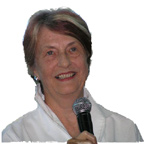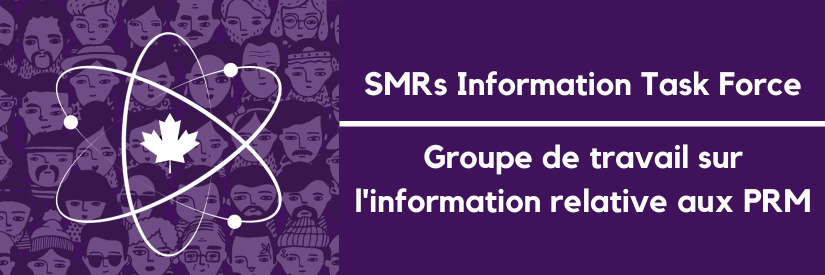Dr Helen Caldicott’s message on nuclear power, now truer than ever
(a) “We can no longer afford to entrust our lives, and the lives and health of future generations, to politicians, bureaucrats, ‘experts’ or scientific specialists, because all too often their objectivity is compromised.
(b) “Most government officials are shockingly uninformed about the medical implications of nuclear power — and yet they daily make life-and-death decisions in regard to these issues.”
(c) Some in the medical profession are too indifferent about larger questions and they are reluctant to look beyond their immediate research and treatment responsibilities.
(d) Many doctors remain silent about the medical hazards of nuclear technology despite their firm knowledge that nuclear radiation is a certain cause of cancer and genetic diseases.
 Is Helen Caldicott’s Nuclear Madness still relevant?, THE HNDU, 11 March JOHN VERGIS VILANILAM Helen Caldicott, the Australia-born physician and anti-nuclear activist of the late 1970s and early 1980s, was a practitioner of paediatrics at the Children’s Hospital Medical Center in Boston, U.S. A leading critic of nuclear technology and armament industries, she tried to conscientise the world through her almost solitary protest writings and TV and radio appearances against the dangers of nuclear technology for the environment.
Is Helen Caldicott’s Nuclear Madness still relevant?, THE HNDU, 11 March JOHN VERGIS VILANILAM Helen Caldicott, the Australia-born physician and anti-nuclear activist of the late 1970s and early 1980s, was a practitioner of paediatrics at the Children’s Hospital Medical Center in Boston, U.S. A leading critic of nuclear technology and armament industries, she tried to conscientise the world through her almost solitary protest writings and TV and radio appearances against the dangers of nuclear technology for the environment.
In the light of Fukushima (2011), Chernobyl (1986) and Three Mile Island (1979) nuclear accidents (all of which happened after 1978) and the great concern they generated in the world during the last four decades, Caldicott’s 1978 book Nuclear Madness assumes prophetic significance.
We cannot ignore the several pieces of vital information missing from the reports of these accidents. Our treasure house of
knowledge of nuclear technology is the poorer for these omissions. But what is more puzzling is the deliberate or accidental camouflaging of scientific truths from people’s vision by well-informed people of national and international significance who ought to, and do know better.
Caldicott did not have any personal stake in taking a strong stand against nuclear technology. Such disinterested personalities are few in the 21st century, and hence this brief note to a brave doctor who took a stand in favour of universal safety. Her book is dedicated to “her children and all the children of the world.”
“As a physician, I contend that nuclear technology threatens life on our planet with extinction. All of us will be affected by radioactive contamination, unless we bring about a drastic reversal of our government’s pro-nuclear policy,” she observed in the late 1970s.
Does her warning and appeal have some relevance to the Kudankulam? Do
we need more damaging accidents than Fukushima to formulate our
policy? For energy-starved countries, particularly those in the
tropical regions such as ours, is not solar safer than nuclear energy?
Incidence of cancer
Caldicott drew the world’s attention to the increased incidence of
leukaemia and other forms of cancers and radiation hazards ever since
the introduction of nuclear technology. The world bodies are still
lackadaisical in their attitude to the dangers of nuclear technology —
for the sake of the promotion of the laissez fair stance and profits
of big energy companies. Despite the proven hazards of nuclear
technology, many powerful nations went on, and still are going on,
spreading the technology for generating electric power, but mainly for
acquiring the military power to attack other countries or defend
themselves from imaginary “first users” of nuclear arms.
If the world can phase out nuclear arms as suggested by Bertrand
Russell and other great scientists of the world, where is the danger
of “First Strike”? If the world can develop solar energy in tropical
countries and find a way to distribute that energy to high energy
consuming Western countries, where is the danger of “First
Strike”?….
From her own anti-nuclear testing experiences spearheaded in Australia
and the U.S., Caldicott learned the following valuable lessons that
could prove useful to the protesters elsewhere in the world,
Kudankulam included:
(a) “We can no loner afford to entrust our lives, and the lives and health of future generations, to politicians, bureaucrats, ‘experts’
or scientific specialists, because all too often their objectivity is compromised.
(b) “Most government officials are shockingly uninformed about the medical implications of nuclear power — and yet they daily make life-and-death decisions in regard to these issues.”
(c) Some in the medical profession are too indifferent about larger questions and they are reluctant to look beyond their immediate research and treatment responsibilities.
(d) Many doctors remain silent about the medical hazards of nuclear technology despite their firm knowledge that nuclear radiation is a certain cause of cancer and genetic diseases.
(e) One may add to the above reasons that no scientist or researcher,
industrialist or inventor has so far found a fool-proof method for the
safe disposal of the large amount of radio-active waste generated by
nuclear power plants all over the world……… Considering the
proliferation of the nuclear technology today and its easy
availability to terrorists, the world has to re-think about the
continued use of it. Will our decision-makers, doctors, the media and
ordinary citizens listen, and read again Nuclear Madness in the
context of Kudankulam? http://www.thehindu.com/opinion/open-page/article2982278.ece
No comments yet.
-
Archives
- April 2024 (287)
- March 2024 (335)
- February 2024 (345)
- January 2024 (375)
- December 2023 (333)
- November 2023 (342)
- October 2023 (366)
- September 2023 (353)
- August 2023 (356)
- July 2023 (363)
- June 2023 (324)
- May 2023 (344)
-
Categories
- 1
- 1 NUCLEAR ISSUES
- business and costs
- climate change
- culture and arts
- ENERGY
- environment
- health
- history
- indigenous issues
- Legal
- marketing of nuclear
- media
- opposition to nuclear
- PERSONAL STORIES
- politics
- politics international
- Religion and ethics
- safety
- secrets,lies and civil liberties
- spinbuster
- technology
- Uranium
- wastes
- weapons and war
- Women
- 2 WORLD
- ACTION
- AFRICA
- Atrocities
- AUSTRALIA
- Christina's notes
- Christina's themes
- culture and arts
- Fuk 2022
- Fuk 2023
- Fukushima 2017
- Fukushima 2018
- fukushima 2019
- Fukushima 2020
- Fukushima 2021
- general
- global warming
- Humour (God we need it)
- Nuclear
- RARE EARTHS
- Reference
- resources – print
- Resources -audiovicual
- World
- World Nuclear
- YouTube
-
RSS
Entries RSS
Comments RSS






Leave a comment